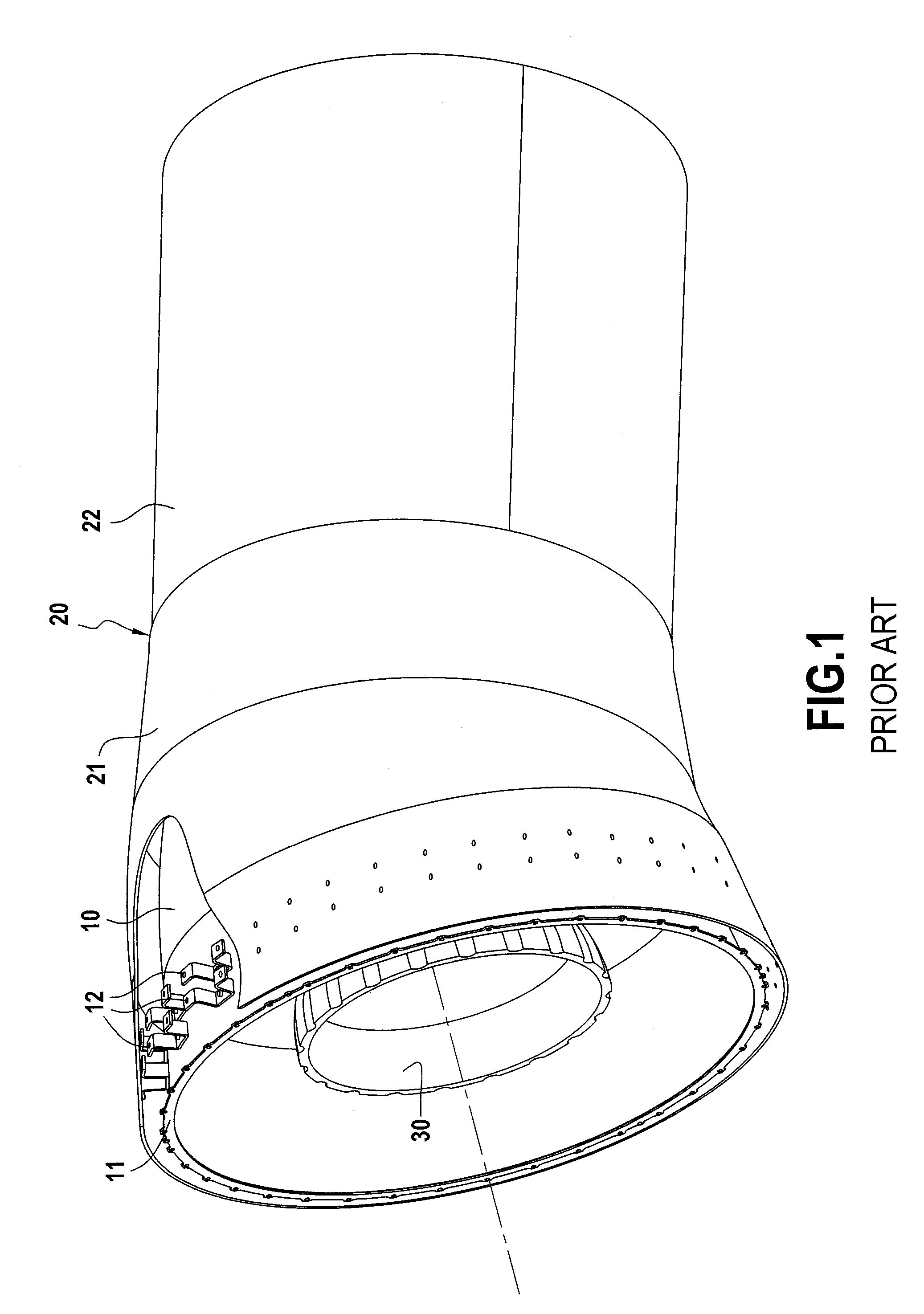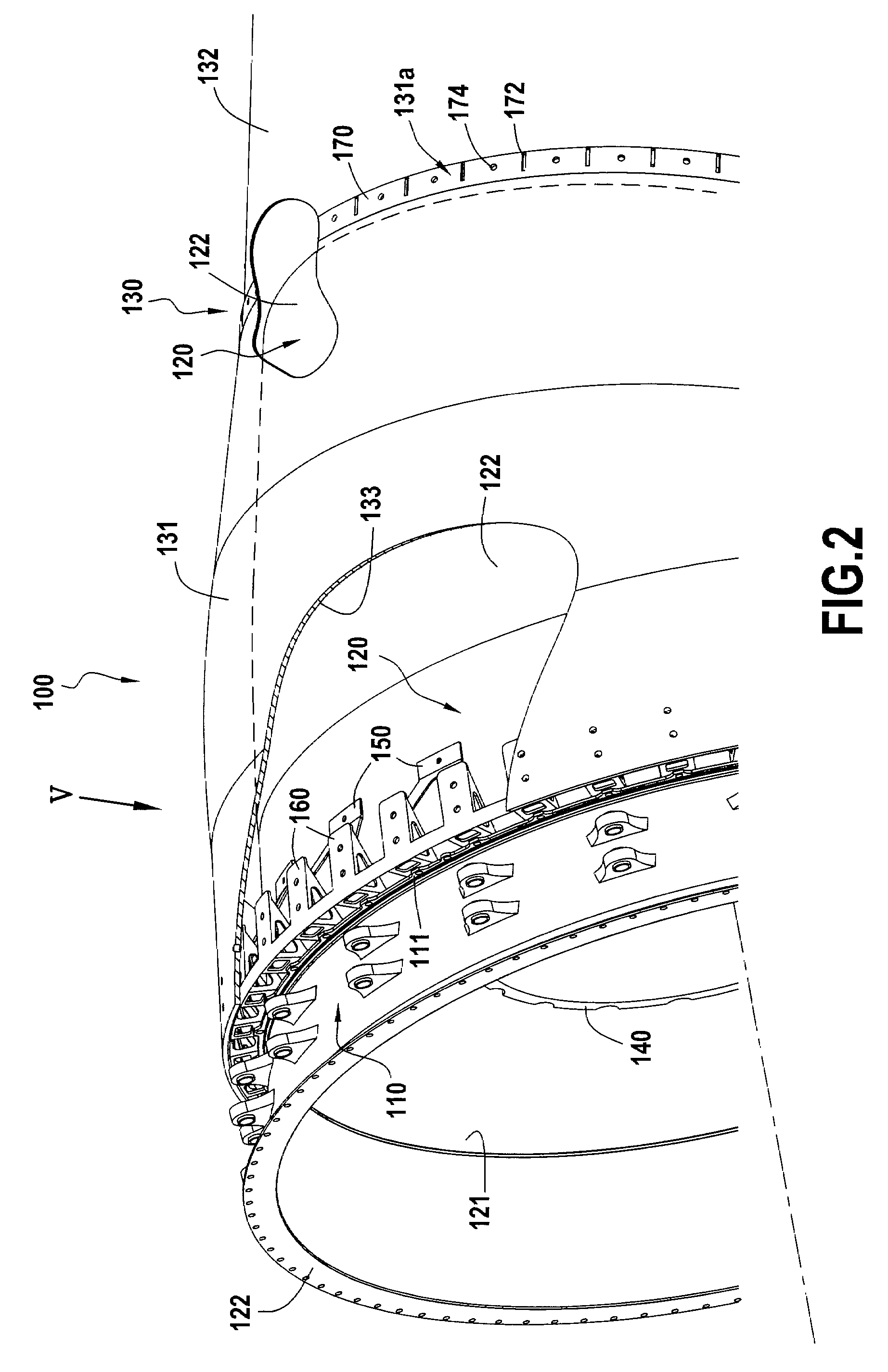Exhaust system for gas turbine
a gas turbine and exhaust system technology, applied in the direction of power plant arrangement/mounting, climate sustainability, propulsive elements, etc., can solve the problems of increasing maintenance costs, reducing the life of the exhaust system, and being relatively high
- Summary
- Abstract
- Description
- Claims
- Application Information
AI Technical Summary
Benefits of technology
Problems solved by technology
Method used
Image
Examples
Embodiment Construction
[0033]A particular but non-exclusive field of application of the invention is that of by-pass gas turbines for aeroengines. FIG. 2 shows an exhaust system 100 for a by-pass aviation gas turbine in accordance with an embodiment of the invention. The exhaust system comprises an exhaust casing 110 designed to be fastened to the outlet from the gas turbine upstream from its combustion chamber (not shown).
[0034]The exhaust system also includes a nozzle for channeling the stream from the gas turbine, which nozzle is located downstream from the exhaust casing 110 and comprises a primary nozzle 120 and a secondary nozzle 130, the secondary nozzle being made up of an upstream wall portion or upstream secondary nozzle 131 and a downstream wall portion or downstream secondary nozzle 132 that extends the primary nozzle 120 and the upstream secondary nozzle 131 in a downstream direction.
[0035]Between its inner wall 121 and a central body and an element or “plug”140 disposed therein, the primary ...
PUM
| Property | Measurement | Unit |
|---|---|---|
| Flexibility | aaaaa | aaaaa |
Abstract
Description
Claims
Application Information
 Login to View More
Login to View More - R&D
- Intellectual Property
- Life Sciences
- Materials
- Tech Scout
- Unparalleled Data Quality
- Higher Quality Content
- 60% Fewer Hallucinations
Browse by: Latest US Patents, China's latest patents, Technical Efficacy Thesaurus, Application Domain, Technology Topic, Popular Technical Reports.
© 2025 PatSnap. All rights reserved.Legal|Privacy policy|Modern Slavery Act Transparency Statement|Sitemap|About US| Contact US: help@patsnap.com



